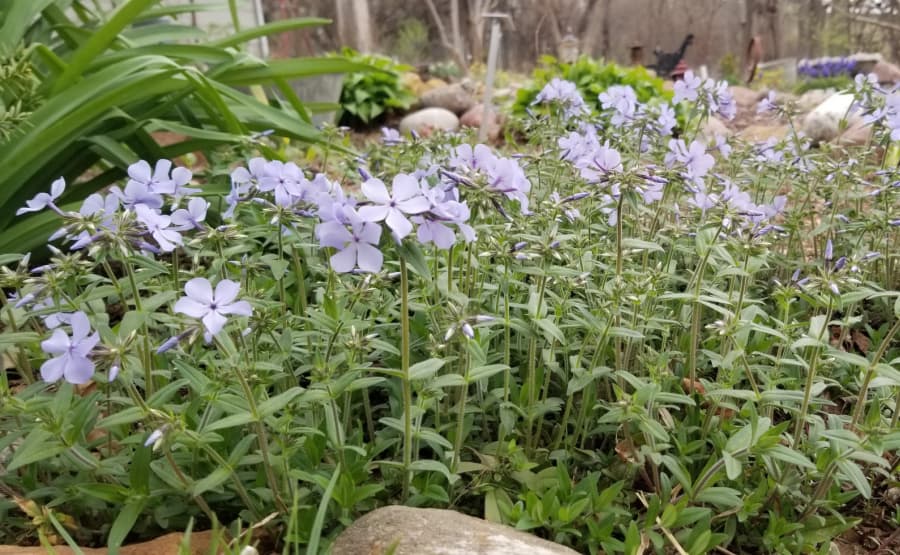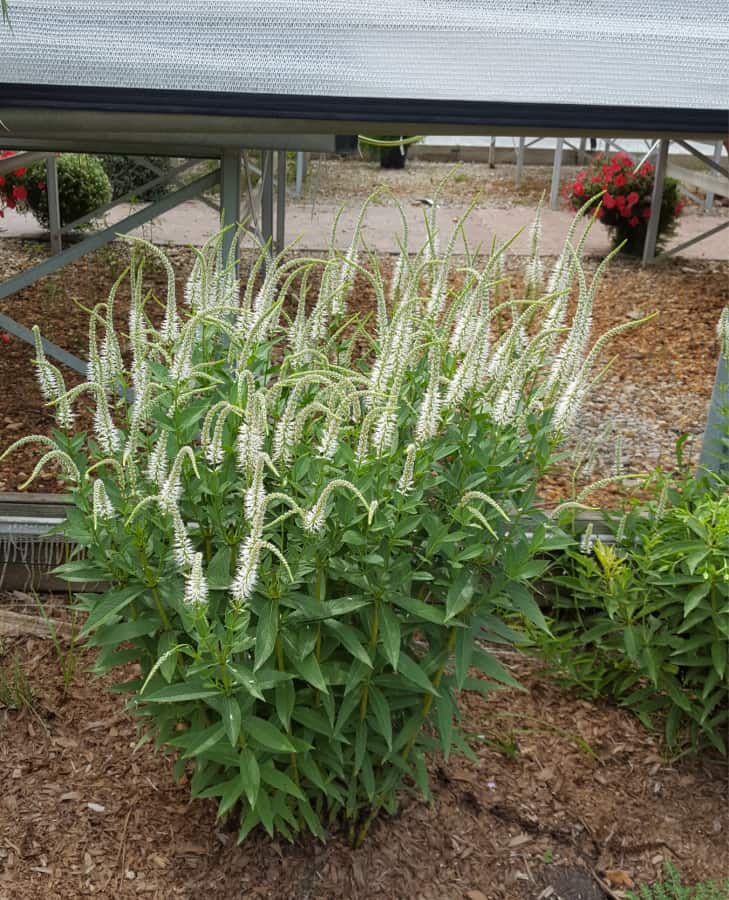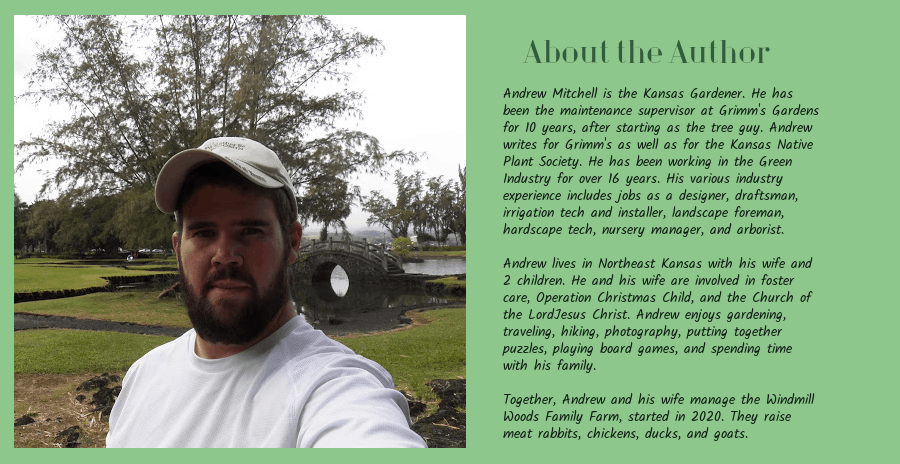Deciding what native plants to add to your landscape can be a daunting challenge. From landscape designers to botanists, homeowners are pressured into adding natives into their landscapes, often without knowing how those plants will do in a traditional garden or landscape setting. If your are designing a meadow garden or native plant garden, you can mostly disregard this post.
More and more I am reading about the benefits of native plants in the landscape. I have already known about this, being a promoter of natives for years. However, after more than 15 years in the landscape maintenance field, I can better attest to which natives are more “behaved” than others.
For this post, I am sticking with true to seed natives, instead of the myriad of cultivars or “nativars” available in the nursery. Despite many native plants being wild, there are quite a few that are great for the landscape, and will perform what they are asked to do. That is, stay within bounds while providing beauty, pollination services, and act as host plants.
Best Native Plants for Full Sun
Most garden or landscape areas, unless surrounded by mature trees, are part to full sun. We already have a host of cultivars and non-native plants that can easily fill the spaces in these areas. But what about native plants for full sun? Many native plants thrive in full sun, especially those from prairie backgrounds.
Now, adding native plants into the landscape can mean a few different things. First, you need to know what type of landscape you have, or want. If you are starting with a blank slate, such as at a newly built home, you may find more room for natives. Types of landscapes include the following:
- Cottage Garden
- Formal Garden
- Foundation Planting
- Meadow Garden
- Fruit Tree Guild
Each of these has specific requirements to make them unique and separate from each other. Adding in native plants makes each one better, if it can be attained. I would find it difficult to use most native plants in a formal garden, because balance, form, and line are very important. But in a cottage garden, many things are possible.

The Plants
The following is a list of 10 species of native plants that grow well in full sun, and can be incorporated into landscaping. These plants are slow spreaders by seed, and mostly stay upright in their spaces.
Perennials
- Rose verbena, Glandularia canadensis – as my most recommend full sun groundcover plant, rose verbena will quickly spread to cover a 4 foot by 6 foot area. The hot pink flowers bloom from May to first frost. It grows only 6 inches tall.
- Aromatic aster, Symphyotrichum oblongifolium – I have tried many asters, but this one is the most compact, and only spreads by seed. Most other asters spread by both seed and rhizomes. It grows 3 to 4 feet tall and wide with bright purple flowers that bloom from October through November. Attracts butterflies and late season bees.
- Showy Penstemon, Penstemon cobaea – an early spring blooming, the shiny green stems hold upright the pink or white flowers. It is favored by bees and grows 1 to 2 feet tall and wide.
- Butterfly Milkweed, Asclepias tuberosa – this is the only milkweed on my list, as it is the only compact milkweed that does little reseeding. The showy orange to yellow or red flowers grow on plants that reach 2 to 3 feet tall and wide, and bloom from June to September. If you want monarch butterflies, this is a must have plant.
- Bluestar, Amsonia hubrichtii – as far as flowering plants go, this is not a star in the garden. But for foliage and texture, it is. The small, star-shaped blue flowers bloom in June on feathery foliage. Planted in mass or in a single clump, bluestar foliage is the show, growing 3 to 4 feet tall and wide. The whole plant turns a brilliant gold to golden-orange in autumn.
- Spike Blazingstar, Liatris spicata – Growing in a nice clump 1 foot across by 1 to 2 feet tall, this blazingstar fits well into any full-sun and especially dry garden or landscape. Flowers are pink and attractive to butterflies and bees alike. It blooms in July in Northeast Kansas.
- Prairie Blazingstar, Liatris pycnostachya – Add in this taller blazingstar, growing 3 to 4 feet tall by 2 feet wide and you have all the height you need from a mid-season perennial. It blooms later than spike blazingstar, in late July into August with magenta-pink flowers.
- Blue Wild Indigo, Baptisia australis – Baptisia is a must have for almost every garden in full sun, and the native blue wild indigo is no exception. These perennials are some of the long-lived native plants and hold their stems very straight. Blooming in May and June, the blue-purple flowers are attractive to bumblebees, and make great cut flowers. They grow 3 to 5 feet tall and wide.

Grasses
- Prairie Dropseed – this native grass has a small demeanor with big impact. It grows 1 to 2 feet tall and wide, and looks similar to fountain grass. Small, airy seedheads top the leaves in late summer and fall.
- Little Bluestem – as far as native grasses go, little bluestem has the best fall color by far. They do have some trouble staying upright, but make up for it with color. The leaves can be green-blue or green in color and grow 3 to 5 feet tall by 2 feet wide. Fall color is reddish to orange.

Best Native Plants for Shade
Living near an oak-hickory remnant in Northeast Kansas means that I have some shade to play around with. At least in the front yard of my landscape that is. With shade, there fewer native plants even available in nurseries, but you can find them if you ask. The farther east you live in the United States, the more likely you are to find native plants for shade conditions.
The Plants
Here are 5 native plants that do very well in landscaping in shady areas.

- Wood blue phlox, Phlox divaricata – growing just 6 inches tall, this is a clumping groundcover plant for shade. I use blue wood phlox as a border plant in my shade garden, where the bright blue to pink flowers last for week in spring, from April through May.
- Nodding Wild Onion, Allium cernuum – this species of wild onion can be grown in part shade to full sun, but its shad tolerance is why I put it here. The pink or white flowers hang down from 1 foot tall plants and are visited by bees and butterflies in mid-summer.
- Wild ginger, Asarum canadense – perhaps the toughest shade loving groundcover, wild ginger can grow in extremely rocky or poor soils. It only reaches a few inches high. The spring flowers smell like carrion and are pollinated by flies.
- Elm-Leaf Goldenrod, Solidago ulmifolia – this shade tolerant goldenrod is also the best behaved goldenrod for landscaping. It holds stems upright on 2 to 3 foot tall plants, 1 to 2 feet wide. The bright yellow flowers attract bees and butterflies alike.
- Bloodroot, Sanguinaria canadensis – although this woodland groundcover can be difficult to find, it is a unique plant that we should all have more of. The flowers are pure white, and form a near-perfect square in overall shape. It grows 4 to 8 inches tall.
Best Native Plants for Wet Spots

Have a wet spot in the landscape? Areas such as those where downspouts pour out, or water stands after a rain, are perfect spots for wetland native species. There are a variety of natives that can fill such an area, though few that would be landscape worthy. Here are 4 native plants for wet areas in the landscape.
- Culver’s Root, Veronicastrum virginicum – As far as wetland species go, this one is very versatile. Not only does it do well in wet areas, but is adaptable to full sun and and even part shade. Growing 3 to 4 feet tall and 1 to 2 feet wide, Culver’s root has showy white, pink, or purple flowers that bloom for several weeks in mid-summer.
- Blue Lobelia, Lobelia silphilitica – The great blue lobelia is a true water loving native, but can grow in part to full sun. Flower spikes appear in late summer (August) and bloom for several weeks. Plants grow 1 to 3 feet tall and 1 foot wide.
- Cardinal Flower, Lobelia cardinalis – Like its cousin the blue lobelia, cardinal flower loves wet areas in full to part sun. Its flowers are a brilliant red, sometimes purple, and grows 1 to 3 feet tall by 1 foot wide.
- Switchgrass, Panicum virgatum – if you need a grass that can be either dry or wet, try switchgrass. One of the big 3 grasses of the native tallgrass prairies, switchgrass grows 3 to 8 feet tall and 3 to 5 feet wide.
Native Plants to Avoid Putting in Landscapes
While I am not recommending the complete ignorance of the following native plants, I do not recommend using them in landscaping. They are either too aggressive through seed or rhizome, or too much of a mess in maintaining order (unless using specific cultivars). Any of the following natives would work great in a meadow garden or prairie restoration project.
- Ohio spiderwort
- Woolly verbena
- Indiangrass
- Black-Eyed Susan (Rudbeckia hirta)
- Red columbine
- Greyhead coneflower
- Golden Alexanders
- Western ironweed
- Common milkweed
- Button Blazingstar (Liatris aspera)
- Small Brown-Eyed Susan (Rudbeckia triloba)
- Old-Field aster (Symphyotrichum pilosum)
- Blue sage
- Purple poppy mallow
- Sideoats grama
- Big bluestem
Why Use Native Plants At All?
If non-natives or nativars are mostly better-behaved, then why should we use native plants at all? Well, native plants are mostly better as host plants for our favorite butterflies, and my favorite moths. Because they are host plants, when we plant them, we get more caterpillars, and as a result, more birds.
Native plants are also more stable in the landscape, being able to withstand temperature and weather swings better than other plants. Just look at your garden during a drought. Which plants are better able to draw water from deep in the soil? Natives of course. Most natives have deep root systems which allow them to access water where other plants cannot.
Conclusion
We know that native plants are better for the environment and the ecology. But now we know which ones are best for our landscapes as well. Knowing this beforehand, would have helped me to design a better garden for myself. But I also would have known how to help you better too.
Happy planting!




